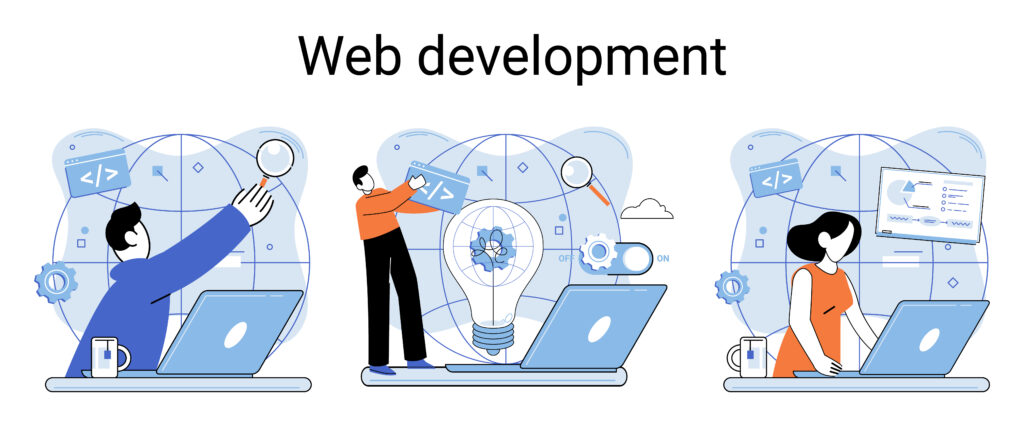The Future of Angular: Trends and Innovations in Development Services
In the dynamic world of web development, Angular has established itself as a cornerstone framework for building robust and scalable applications. As the digital landscape continues to evolve, so does Angular, adapting to new trends and embracing innovations that shape its future. This blog explores the latest trends and innovations in Angular development services, providing insights into what lies ahead for this powerful framework. The Evolution of Angular Angular, originally developed by Google in 2010, has come a long way since its inception. From its early days as AngularJS, the framework has undergone significant transformations, culminating in the modern Angular we know today. With regular updates and a strong focus on improving performance and developer experience, Angular remains at the forefront of web development technologies. Key Trends Shaping the Future of Angular Enhanced Performance with Ivy One of the most significant innovations in Angular is the Ivy rendering engine. Introduced in Angular 9, Ivy offers improved performance, smaller bundle sizes, and better debugging capabilities. Its ability to compile components independently paves the way for faster and more efficient applications. As Ivy continues to evolve, we can expect even greater performance optimizations and enhancements in future Angular releases. Server-Side Rendering (SSR) and Angular Universal With the growing demand for faster load times and better SEO, server-side rendering has become a crucial aspect of modern web development. Angular Universal enables developers to render Angular applications on the server, resulting in faster initial load times and improved search engine visibility. The future of Angular will likely see further improvements in SSR capabilities, making it easier to build high-performance, SEO-friendly applications. Progressive Web Applications (PWAs) Progressive Web Applications (PWAs) are transforming the way users interact with web applications, offering native app-like experiences directly in the browser. Angular provides robust support for building PWAs, allowing developers to create offline-capable, highly responsive applications. As PWAs gain traction, Angular’s PWA support will continue to be a key focus, with new features and enhancements making it easier to build cutting-edge web applications. Component-Driven Development The trend towards component-driven development is reshaping the way applications are built. Angular’s modular architecture, combined with its powerful component-based approach, allows developers to create reusable and maintainable code. The future will see an even stronger emphasis on component-driven development, with tools and libraries designed to streamline the creation and management of components. Improved Tooling and Developer Experience Angular’s commitment to improving developer experience is evident in its extensive suite of tools and features. The Angular CLI, Angular Console, and other development tools simplify common tasks and enhance productivity. Future innovations will likely focus on further streamlining the development process, offering enhanced debugging, testing, and build capabilities. Innovations to Watch For Machine Learning and AI Integration As machine learning and artificial intelligence become more prevalent, integrating these technologies into Angular applications will open new possibilities. Future versions of Angular may include built-in support for ML and AI frameworks, making it easier to incorporate intelligent features into web applications. Advanced State Management Solutions Managing state in complex applications can be challenging. While Angular provides powerful state management libraries like NgRx, the future may bring more advanced and user-friendly solutions for state management. These innovations will simplify the process of handling application state, making it more intuitive and efficient. Enhanced Accessibility Features Accessibility is a crucial aspect of modern web development. Angular’s commitment to accessibility will likely result in new features and improvements that make it easier to build inclusive applications. Developers can expect enhanced tools and guidelines for creating accessible user interfaces. GraphQL Integration GraphQL is revolutionizing the way data is fetched and managed in web applications. Future Angular versions may offer seamless integration with GraphQL, providing developers with powerful tools for efficient data querying and manipulation. Conclusion The future of Angular is bright, with ongoing trends and innovations promising to enhance its capabilities and solidify its position as a leading web development framework. From performance optimizations with Ivy to the rise of PWAs and advanced tooling, Angular is poised to meet the demands of modern web development. By staying abreast of these trends and embracing new innovations, developers can leverage Angular to build high-quality, future-proof applications that deliver exceptional user experiences.
The Future of Angular: Trends and Innovations in Development Services Read More »





